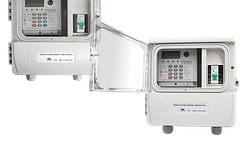A recent interaction with one of our valued customers sparked a thought-provoking discussion about two key strategies in energy management: demand response and peak shaving. The question was straightforward, yet profound: "What's the difference between demand response and peak shaving?"
I realized that while these terms are often used interchangeably, there are subtle differences that make each one unique. Understanding these differences can help utility leaders and grid managers make more informed decisions about their energy management strategies. So, I decided to write this article for clarification.
Understanding Demand Response
Demand response (DR) is a strategy used by utilities and grid operators to incentivize consumers to reduce their electricity usage during periods of high demand. DR programs can be price-based, where electricity prices are increased during peak demand times to encourage lower usage, or incentive-based, where consumers are financially rewarded for reducing their usage at specific times.
The primary goals of DR are to ensure grid stability, avoid blackouts, and reduce the reliance on expensive and inefficient peak power plants. By encouraging consumers to shift their usage to off-peak times, DR helps flatten the load curve and create a more balanced and efficient power system.

Exploring Peak Shaving
Peak shaving, on the other hand, is a technique used by individual businesses or consumers to reduce their electricity usage during peak demand periods. This is often achieved through the use of on-site energy storage or generation systems, such as batteries or solar panels, which can be used to supplement grid electricity during peak times.
Peak shaving can help businesses save money by reducing their demand charges, which are often based on their highest level of electricity usage during a billing period. By reducing their peak demand, businesses can lower these charges and make their overall energy costs more predictable.
Key Differences Between Demand Response and Peak Shaving
At first glance, demand response and peak shaving may seem similar, as both involve reducing electricity usage during peak demand periods. However, their differences lie in their scope, approach, and objectives.
Firstly, DR is generally a large-scale strategy implemented by utilities or grid operators, whereas peak shaving is a smaller-scale tactic used by individual businesses or consumers. While DR programs can impact the entire grid, peak shaving strategies only affect the electricity usage of a specific building or facility.
Secondly, DR programs typically use pricing or financial incentives to encourage lower usage, while peak shaving often involves the use of on-site energy systems. While DR requires consumers to change their behavior in response to external signals, peak shaving can be automated and does not necessarily require any changes in behavior.
Finally, the primary goal of DR is to ensure grid stability and efficiency, while the main objective of peak shaving is to reduce energy costs for individual businesses or consumers.
Takeaway
While demand response and peak shaving are both crucial tools in the energy management toolbox, they each have unique characteristics that make them suitable for different situations and objectives. By understanding these differences, utility leaders and grid managers can make more informed decisions about their energy strategies and better meet the needs of their customers and the grid.
I hope this article has helped to clarify the differences and provided some valuable insights into these important energy management strategies. Share your thoughts in the comments section, or get in touch with us to explore how our comprehensive solutions can empower you to achieve your goals.
Editor's note: This article was originally published in August 2023 and has been updated for comprehensiveness.





All comments are moderated before being published. Inappropriate or off-topic comments may not be approved.